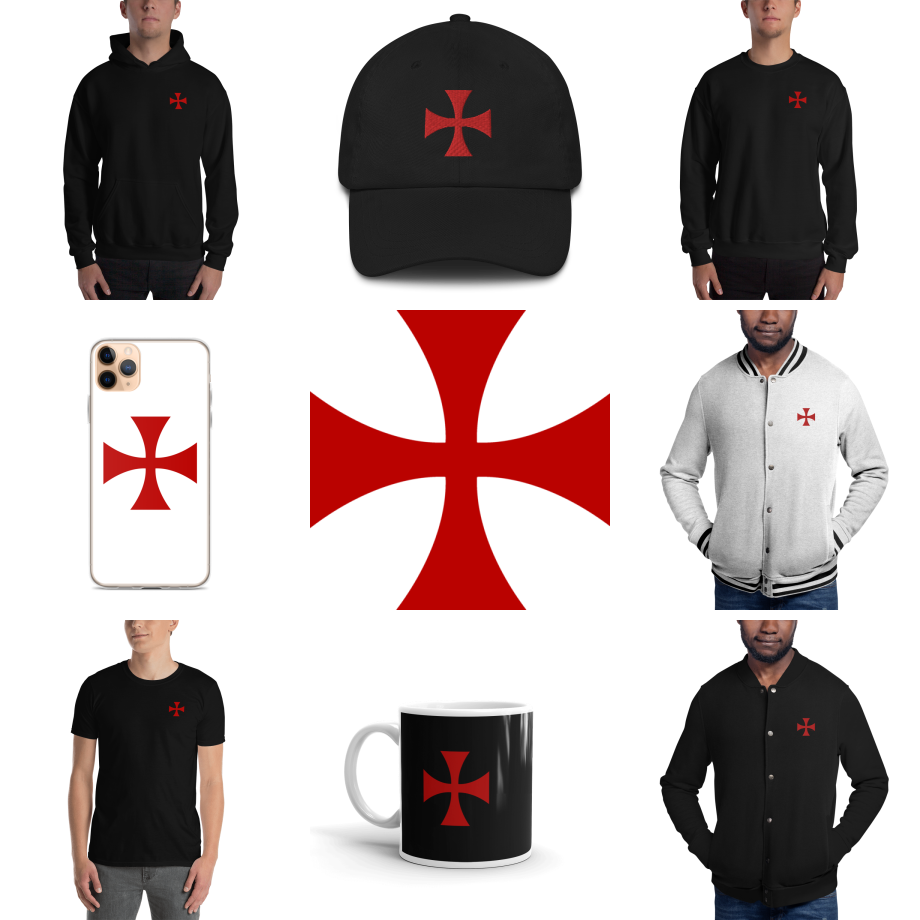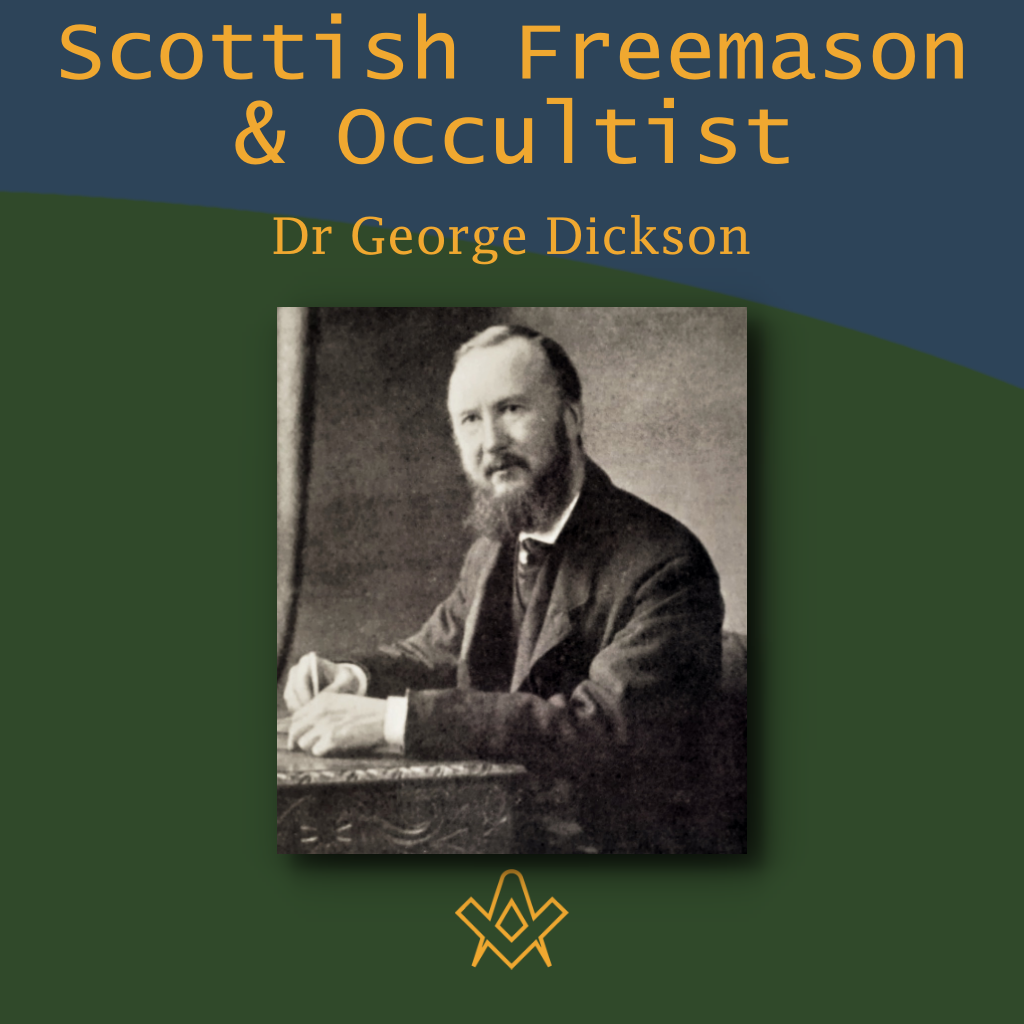Dr George Dickson was a prominent and very active Freemason in Edinburgh and such was his popularity and ubiquity in Masonic circles, there was scarcely a Lodge in the city from whom he had not received honorary membership.
Article by Bro. Kenneth C. Jack, FSAScot FPS Past Master, Lodge St. Andrew, No. 814, Pitlochry, Scotland.
INTRODUCTION
Little is currently known of our subject’s early life, but George Dickson graduated with Honours as a medical doctor at the University of Aberdeen in 1864, and received his Diploma as a Fellow of the Royal College of Surgeons of Edinburgh in 1882.
He spent his entire professional life in Edinburgh and is entered in the Medical Directory for the period between 1864 and 1909 as follows:
Dickson, George; 9 India Street, Edinburgh;
MD University of Aberdeen (Hons) 1864;
Licentiate of the Royal College of Physicians of Edinburgh 1863;
Licentiate of the Royal College of Surgeons of Edinburgh 1863;
Fellow of the Royal College of Surgeons of Edinburgh 1882;
Fellow of the Obstetrical Society of Edinburgh
Member of the Medico-Chirurgical Society of Edinburgh
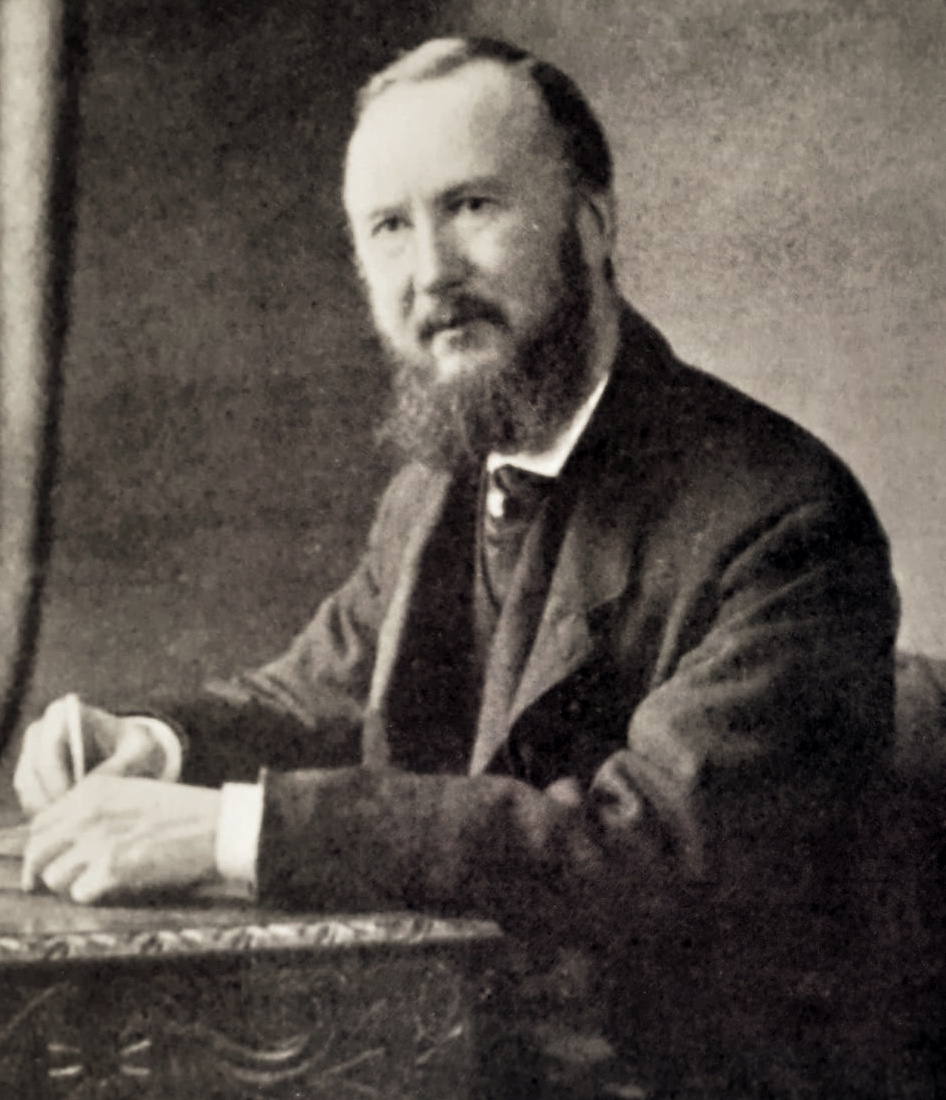
Dr George Dickson, MD., F.R.C.S.E., R.W.M. 1982 – 1897
Image Credit: Ewan Rutherford & The Lodge of Edinburgh (Mary’s Chapel) No.1
FREEMASONRY
Dickson was a prominent and very active Freemason in Edinburgh and such was his popularity and ubiquity in Masonic circles, there was scarcely a Lodge in the city from whom he had not received honorary membership.
He was a member of The Lodge of Edinburgh, (Mary’s Chapel) No. 1, and his association with the Lodge spanned forty years.
He was Master of the Lodge for five years from 1891. Along with Brother David Murray-Lyon, the Grand Secretary of the time, he was instrumental in editing a history of that ancient Lodge; and was the Lodge Librarian and Historian at the time of his death.
In that capacity, he spent a considerable amount of time researching the minutes of the Lodge which date back to 1599.
He was also a member of the Grand Committee of the Grand Lodge of Scotland. On 6 October 1893, whilst serving as Master, he submitted sketches of a design he had formulated to be carved in stone above the entrance to the Lodge.
The plan was accepted and the design duly implemented. The carving has become an iconic part of the Lodge’s identity.
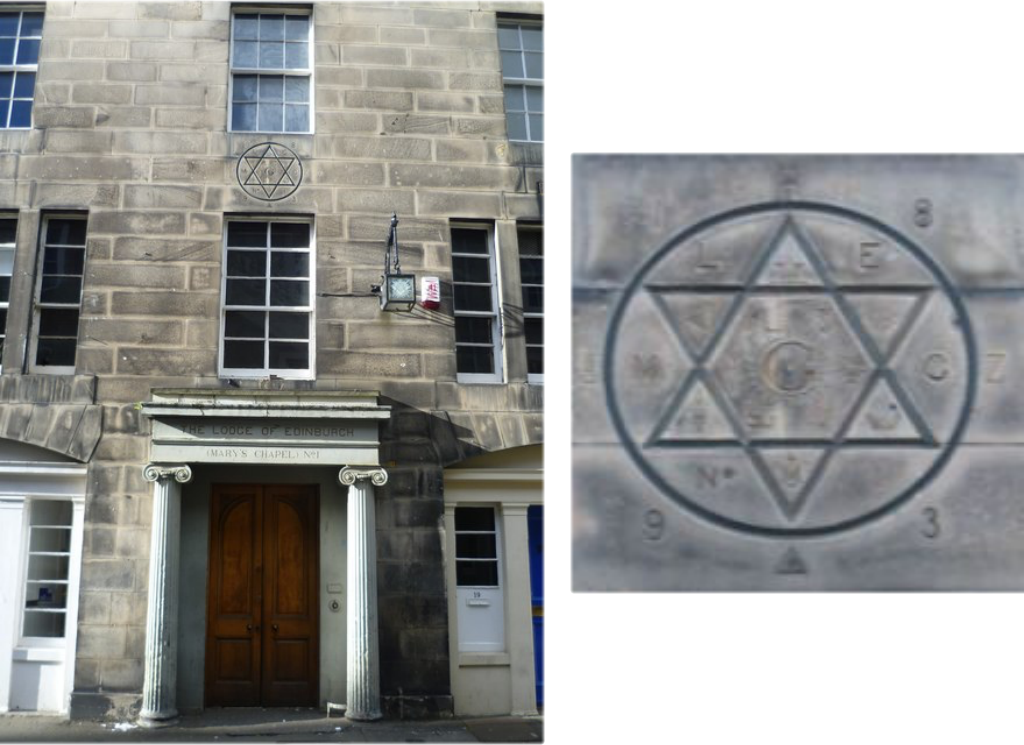
Left: The Lodge of Edinburgh No.1 (Mary’s Chapel), Hill Street
cc-by-sa/2.0 – image © kim traynor – geograph.org.uk/p/3150650
Right: Detail of the carving designed by Dr Dickson
Image credit: The Lodge of Edinburgh (Mary’s Chapel) No.1
Dickson was Secretary of the Lodge when King Edward VII (then Prince of Wales) was initiated into the Lodge, and as a memento of the conspicuous event, got his hands on a pen used then by the future king which remained one of his most prized possessions, and which now reposes in the Lodge museum.
He was clearly highly regarded by his Lodge for at the tercentenary celebrations concerning the oldest Lodge minute his brethren presented him with a bust of himself.
At the Lodge Installation, a year prior to his passing, their huge respect for the Doctor was further highlighted when the brethren presented him with a silver salver.
This respect was obviously gained through his long and committed work for the Lodge, and Dr Dickson himself took immense pride in the fact he could count his absences from the Lodge on the fingers of one hand.
One suspects though, that Dickson was very circumspect concerning his other quasi-Masonic activities, particularly given his association with such an ancient and prestigious Lodge as the Lodge of Edinburgh.
The first clue as to Dickson’s interest in the more esoteric aspects of Freemasonry is the fact he was a member of Anthony Oneal Haye’s early Rosicrucian Society in Edinburgh.
The earlier society seems to have expired in around 1870, but in 1873 Dickson was a founder member of the East of Scotland College (now Metropolitan) of the Societas Rosicruciana in Scotia (SRIS) chartered by the English society, and was installed as the society’s Conductor.
In a history of the society Dickson’s Masonic credentials are detailed: –
Master of the Lodge of Edinburgh St. Mary’s Chapel No. 1 from 1892 to 1896; a member of Grand Committee for 29 years; he joined Edinburgh Conclave No. 4 (E.C.) in 1876 just before the Grand Imperial Council for Scotland was formed, and was Sovereign of the Conclave 1889-92.
He was First Principal of Edinburgh St. Andrew Chapter No. 83, (1883-1891,) and was member of Supreme Committee.
He was Honorary Depute Grand Principal, Grand Cross of Constantine 1881, a member of Royal Order, and 32nd Ancient and Accepted Rite.
He was a Senior Substitute Magus, SRIS 1893-1901, and died in 1909.

SRIS emblem
OCCULT INTERESTS
What is not so well known perhaps is his affiliation with a number of other quasi-Masonic or fringe orders. Chief of these must be his membership of the Hermetic Order of the Golden Dawn.
He appears on the Members Roll as member No. 44, in the United Kingdom; but the lists this writer has viewed are silent on where he was initiated, although it is likely to have been Amen-Ra Temple No. 6, in his home city of Edinburgh.
However, with his numerous associates in the occult world, it may have been any of the Temples extant in the United Kingdom at that time.
His Latin motto within this Order was Fortes Fortuna Juvat (fortune favours the brave).
Evidence of George Dickson’s membership of the Golden Dawn is to be found in the archive of the Library and Museum of Freemasonry in London.
Contained therein is a report dated 28 October 1895, and which is addressed to the Registrar of the Order in London, one William Wynn Westcott (Sapere Aude).
It states that the Grade of Philosophus [4=7] had been conferred upon Dr Robert W. Felkin (Finem Respice), Mrs Mary Jane Felkin (Per Aspera ad Astra), Mrs Sophia Elizabeth Moffat (Vive ut Vivas), Mrs Emily Ann Drummond (In de Confido), and Mrs Margaret Jane Dalziel Grant (Audeo).
The report is signed by George Dickson (Fortes Fortuna Juvat) as Hierophant of the Temple, and Mrs F.A. Brodie-Innes (Sub Hoc Signo Vinces) as Cancellarius of the Temple.
The latter’s husband John William Brodie-Innes would have been Chief of the Amen-Ra Temple in Edinburgh at that time.

William Wynn Westcott (1848-1925) Supreme Magus of the SRIA and co-founder of the Hermetic Order of the Golden Dawn
IMAGE LINKED: wikimedia Attribution 4.0 International (CC BY 4.0)
Dickson’s only son: William Elliott Carnegie Dickson – better known as W.E. Carnegie Dickson, or simply Carnegie Dickson, was clearly influenced by his father, for he also pursued a career in medicine, and had a very keen interest in occultism.
Carnegie resided in Edinburgh prior to moving his medical practice to Harley Street in London.
He appears to have been a member of a number of schismatic offshoots of the original Golden Dawn, namely the Stella Matutina, the Rosicrucian Order of Alpha et Omega, and the Cromlech Temple.
He joined the Stella Matutina on 24 July 1909, and attained grade 5=6.
He utilised the same outer order motto as his father. He is also known to have been involved with noted Edinburgh occultist John William Brodie-Innes in the famous Cromlech Temple, (Solar Order) which was not a recognised Golden Dawn temple, but had close links to the Order, and is said to have succeeded Brodie-Innes as Chief of the Rosicrucian Alpha et Omega Order.
He also became a member of the so-called Secret College in London, where membership was restricted to members of the Societas Rosicruciana in Anglia (SRIA) who had attained the 4th grade in that society.
He was indeed a Rosicrucian of serious gravitas.
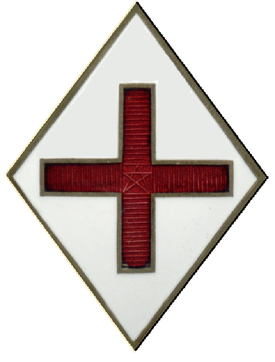
Logo of the SRIA
In his book Rosicrucians, Past and Present; At Home and Abroad, fellow Rosicrucian and Golden Dawn founder member William Wynn Westcott refers to Dickson junior: –
A copy of a very curious old Kabbalistic picture from a Syriac Gospel with a descriptive essay by Dr Carnegie Dickson, a notable Scotch (sic) Rosicrucian Adept, has just been given to our Library.
George Dickson was also a member of famous (or perhaps infamous) Masonic author and mystic John Yarker’s Order of Martinists in England; an Order devoted to the teachings of the French Mystics, Martinez de Pasqually and Louis Claude de St. Martin; once again, emphasising his interest in the esoteric.
However, it appears that this Order was little more than a correspondence circle; for as stated in a paper entitled A.E. Waite: Revolutionary Martinist the author states: –
His Lodge at Manchester, which had been chartered by Papus (Gerard Encausse) as No. 45, had members scattered about the country, but there is no evidence that they ever met as a body.
Two years later, in September 1899, Yarker established a Grand Council for England.
This body had the sanction of the Supreme Council of the Martinist Rite at Paris, but again, it seems never to have met.
The author identifies Yarker’s members as including:
Westcott (William Wynn Westcott) Frederick Holland, Ferdinand Schnitger, R.S. Brown, and George Dickson, all of whom were prominent in esoteric and fringe Masonic circles.
THE HERMETIC BROTHERHOOD OF LUXOR
We are witnessing the same names coming to the fore in any mention of 19th century British esotericism and occultism. George Dickson was quite possibly a member of the Hermetic Brotherhood of Luxor, in some respects, a forerunner to the Hermetic Order of the Golden Dawn, and which also practiced ceremonial magic.
The founder of this organisation was a Max Theon; but to all intents and purposes, it was led by a Scotsman by the name of Peter Davidson.
Davidson hailed from Forres in Scotland where he was a violin maker. He was styled the Provincial Grand Master in the North and was familiar with many figures in the 19th century occult scene in Britain, including members of the SRIA.
He was an accomplished writer, and wrote or edited a number of publications concerning mystical or occult matters.
Davidson eventually emigrated to Georgia in the United States of America. There has been much speculation as to whether or not he was a Freemason.
There is no evidence that he was, but his sons and daughters are known to have become involved in Freemasonry in the States.

Max Théon in Algeria – original source unknown
IMAGE LINKED: wikimedia Attribution 4.0 International (CC BY 4.0)
It is not the purpose of this paper to provide a detailed analysis of the Hermetic Brotherhood of Luxor, but simply to highlight the connections that George Dickson had with the organisation.
On his arrival in America, Davidson continued to propagate the Order there. One of his ambitions was to found a colony, based on Hermetic principles, a sort of spiritual utopia as it were.
In March 1886, a prospectus for the enterprise was issued with the stated aim of raising twenty thousand pounds, from the issue of four thousand shares, at five pounds per share issued.
Land in Georgia had apparently been set aside for the purpose but the land was only being held in reserve for a short time, at a bargain price.
Three of the Directors concerned with this ambitious plan were Thomas Burgoyne, Peter Davidson and William Alexander Ayton, all of whom were connected with the Hermetic Brotherhood of Luxor.
Some lost money through this enterprise and many dismissed it as an elaborate fraud perpetrated by Thomas Burgoyne.
However, a number of persons named on the prospectus were known to go on to become members of the Hermetic Order of the Golden Dawn; one of them being Dr George Dickson.
It is appreciated that this is scant evidence with which to confidently assert that Dickson was a member of the Hermetic Brotherhood of Luxor, but taking this into account along with his known proclivities and contacts, it seems highly probable that he was.
Dr George Dickson died in Edinburgh on 18 January 1909 at the age of 71 years.
Further reading:
Article: Peter Davidson 1837 – 1915 Sue Young Histories https://www.sueyounghistories.com/2009-04-28-peter-davidson-1837-1915/
Article by: Kenneth C. Jack
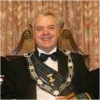
Kenneth C. Jack FPS is an enthusiastic Masonic researcher/writer from Highland Perthshire in Scotland.
He is Past Master of a Craft Lodge, Past First Principal of a Royal Arch Chapter, Past Most-Wise Sovereign of a Sovereign Chapter of Princes Rose Croix.
He has been extensively published in various Masonic periodicals throughout the world including: The Ashlar, The Square, The Scottish Rite Journal, Masonic Magazine, Philalethes Journal, and the annual transactions of various Masonic bodies.
Kenneth is a Fellow of the Philalethes Society, a highly prestigious Masonic research body based in the USA.
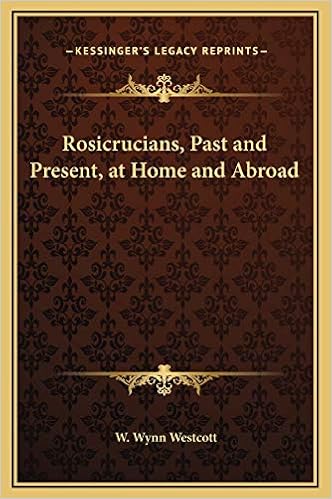
Rosicrucians, Past and Present, at Home and Abroad
By: William Wynn Westcott
This scarce antiquarian book is a facsimile reprint of the original. Due to its age, it may contain imperfections such as marks, notations, marginalia and flawed pages. Because we believe this work is culturally important, we have made it available as part of our commitment for protecting, preserving, and promoting the world’s literature in affordable, high quality, modern editions that are true to the original work.

The Golden Dawn: The Original Account of the Teachings, Rites, and Ceremonies of the Hermetic Order
By: Israel Regardie & John Greer
First published in 1937, Israel Regardie’s The Golden Dawn has become the most influential modern handbook of magical theory and practice. In this new, definitive edition, noted scholar John Michael Greer has taken this essential resource back to its original, authentic form. With added illustrations, a twenty-page color insert, additional original material, and refreshed design and typography, this powerful work returns to its true stature as a modern masterpiece.
An essential textbook for students of the occult, The Golden Dawn includes occult symbolism and Qabalistic philosophy, training methods for developing magical and clairvoyant powers, rituals that summon and banish spiritual potencies, secrets of making and consecrating magical tools, and much more.
Recent Articles: Kenneth C. Jack
 Observations on the History of Masonic Research Archaeology is often associated with uncovering ancient tombs and fossilized remains, but it goes beyond that. In a Masonic context, archaeology can be used to study and analyze the material culture of Freemasonry, providing insight into its history and development. This article will explore the emergence and evolution of Masonic research, shedding light on the challenges faced by this ancient society in the modern world. |
 Anthony O'Neal Haye – Freemason, Poet, Author and Magus Discover the untold story of Anthony O’Neal Haye, a revered Scottish Freemason and Poet Laureate of Lodge Canongate Kilwinning No. 2 in Edinburgh. Beyond his Masonic achievements, Haye was a prolific author, delving deep into the history of the Knights Templar and leaving an indelible mark on Scottish Freemasonry. Dive into the life of a man who, despite his humble beginnings, rose to prominence in both Masonic and literary circles, leaving a legacy that continues to inspire. |
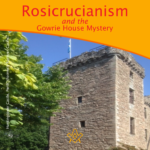 Rosicrucianism and the Gowrie House Mystery Unearth the mystifying intersections of Rosicrucianism and the infamous Gowrie House Mystery. Dive into speculative claims of sacred knowledge, royal theft, and a Masonic conspiracy, harking back to a fateful day in 1600. As we delve into this enthralling enigma, we challenge everything you thought you knew about this historical thriller. A paper by Kenneth Jack |
 Thomas Telford's Masonic Bridge of Dunkeld Of course, there is no such thing as a ‘Masonic Bridge’; but if any bridge is deserving of such an epithet, then the Bridge of Dunkeld is surely it. Designed by Scotsman Thomas Telford, one of the most famous Freemasons in history. |
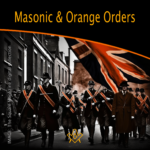 The masonic and orange orders: fraternal twins or public misperception? “Who’s the Mason in the black?” |
 Kenneth Jack's research reveals James Murray, 2nd Duke of Atholl – the 'lost Grand Master' |
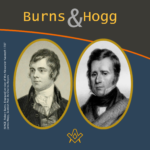 An Oration delivered to the Annual Burns and Hogg Festival, at Lodge Canongate Kilwinning, No. 2, Edinburgh, on 24 January 2018. By Bro. Kenneth C. Jack, FSAScot FPS, Past Master, Lodge St. Andrew, No. 814, Pitlochry. |
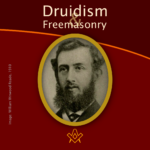 William Winwood Reade was a Scottish philosopher, historian, anthropologist, and explorer born in Crieff, Perthshire, Scotland. The following article by Kenneth Jack, provides some hints that William may have been a Freemason, but there is presently no definitive evidence he was. |
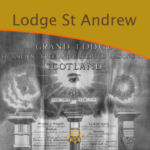 What's in a name? A brief history of the first Scottish Lodge in Australia - By Brother Kenneth C. Jack, Past Master, Lodge St. Andrew, No. 814, Pitlochry |
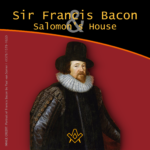 Sir Francis Bacon and Salomon’s House Does Sir Francis Bacon's book "The New Atlantis" indicate that he was a Rosicrucian, and most likely a Freemason too? Article by Kenneth Jack |
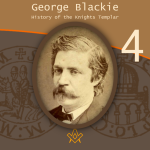 George Blackie – The History of the Knights Templar P.4 The final part in the serialisation of George Blackie's 'History of the Knights Templar and the Sublime Teachings of the Order' transcribed by Kenneth Jack. |
 George Blackie – The History of the Knights Templar P.3 Third part in the serialisation of George Blackie's 'History of the Knights Templar and the Sublime Teachings of the Order' transcribed by Kenneth Jack. |
 George Blackie – The History of the Knights Templar P.2 Second part in the serialisation of George Blackie's 'History of the Knights Templar and the Sublime Teachings of the Order' transcribed by Kenneth Jack. |
 George Blackie – The History of the Knights Templar P.1 First part in the serialisation of George Blackie's History of the Knights Templar and the Sublime Teachings of the Order – by Kenneth Jack |
 Little known as a Freemason, Bro Dr Robert ‘The Bulldog’ Irvine remains a Scottish rugby legend, and his feat of appearing in 10 consecutive international matches against England has only been surpassed once in 140 years by Sandy Carmichael. |
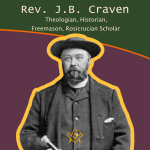 Rev. J.B. Craven: Theologian, Historian, Freemason, And Rosicrucian Scholar Archdeacon James Brown Craven is one of those unsung heroes of Scottish Freemasonry about whom very little has been previously written – here Kenneth Jack explores the life and works of this remarkable esoteric Christian. |
 Discover the powerful family of William Schaw, known as the 'Father of Freemasonry' |
 This month, Kenneth Jack invites us to look at the life of Sir William Peck; - astronomer, Freemason and inventor of the world's first electric car. A truly fascinating life story. |
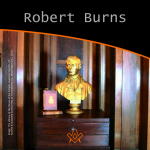 A Tribute to Scotland's Bard – The William Robertson Smith Collection With Burns' Night approaching, we pay tribute to Scotland's most famous Bard – The William Robertson Smith Collection |
 The Joy of Masonic Book Collecting Book purchasing and collecting is a great joy in its own right, but when a little extra something reveals itself on purchase; particularly with regards to older, rarer titles.. |
 Masons, Magus', and Monks of St Giles - who were the Birrell family of Scottish Freemasonry? |
 The 6th Duke of Atholl - Chieftain, Grand Master, and a Memorial to Remember In 1865, why did over 500 Scottish Freemasons climb a hill in Perthshire carrying working tools, corn, oil and wine? Author Kenneth Jack retraces their steps, and reveals all. |
 Charles Mackay: Freemason, Journalist, Writer Kenneth Jack looks at life of Bro Charles Mackay: Freemason, Journalist, Writer, Poet; and Author of ‘Tubal Cain’. |
 A Mother Lodge and a Connection Uncovered, a claim that Sir Robert Moray was the first speculative Freemason to be initiated on English soil. |
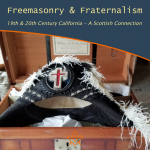 What is it that connects a very old, well-known Crieff family, with a former President of the United States of America? |
 The life of Bro. Cattanach, a theosophist occultist and Scottish Freemason |
 The Mysterious Walled Garden of Edzell Castle Explore the mysterious walled garden steeped in Freemasonry, Rosicrucianism, and Hermeticism. |
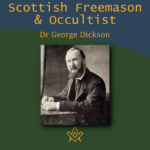 Dr. George Dickson: Scottish Freemason and Occultist Bro. Kenneth explores the life of Dr George Dickson a Scottish Freemason and Occultist |
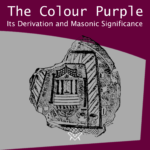 The Colour Purple - Its Derivation and Masonic Significance What is the colour purple with regards to Freemasonry? The colour is certainly significant within the Royal Arch series of degrees being emblematical of Union. |
 Bridging the Mainstream and the Fringe Edward MacBean bridging mainstream Freemasonry with the fringe esoteric branches of Freemasonry |
 Freemasonry in the Works of John Steinbeck We examine Freemasonry in the Works of John Steinbeck |
 Renegade Scottish Freemason - John Crombie Who was John Crombie and why was he a 'renegade'? |
 Scottish Witchcraft And The Third Degree How is Witchcraft connected to the Scottish Third Degree |
masonic knowledge
to be a better citizen of the world
share the square with two brothers

click image to open email app on mobile device
